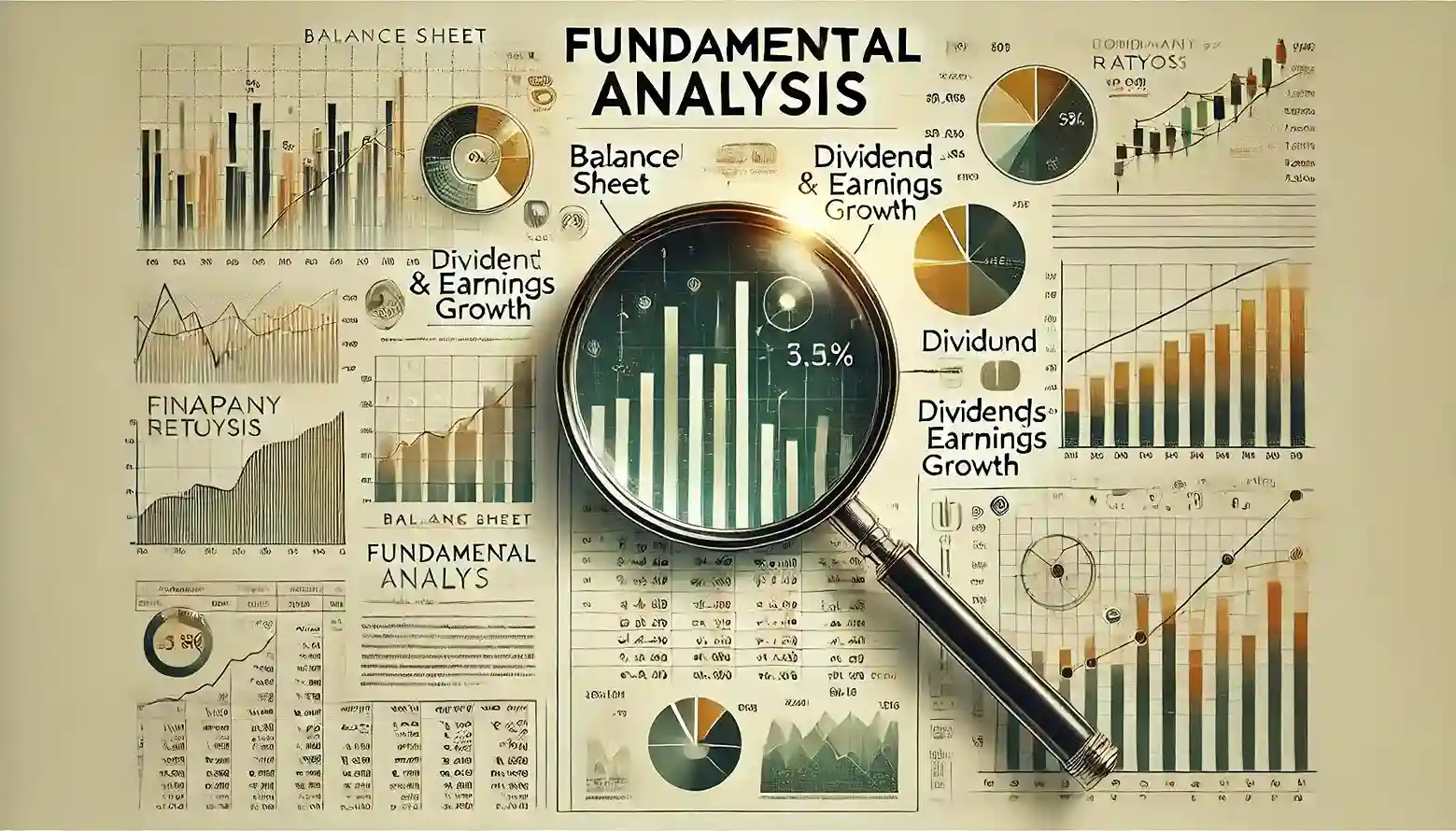Introduction
Many people’s are confused about how to select stocks for trading and investing and also selecting the right stocks is crucial for achieving financial success in the stock market. The process involves various strategies and considerations that cater to different investor profiles, financial goals, and market conditions. Below is a detailed explanation of the key aspects of stock selections.
Need for Stock Selection
Stock selection is essential because not all stocks are created equal. Different stocks offer different levels of risk and return, and they behave differently under various market conditions. A well-chosen stock portfolio aligns with your financial goals, risk appetite, and investment strategy, helping you achieve long-term success in the stock market.

Stock Selection Based on Investor vs Trader
As an Investor
Time Horizon: Investors generally have a long-term perspective and how to invest in share market is big concern. Investors often hold stocks for years or even decades.
Approach: Focus on fundamental analysis to assess a company’s financial health, business model, and growth potential.
Risk Tolerance: Usually moderate to low, as investors seek steady returns over time.
Example: An investor might buy shares of a well-established company like Reliance or HDFC Bank, planning to hold them for many years.
As a Trader
Time Horizon: Traders have a short-term perspective, often holding stocks for days, hours, or even minutes.
Approach: Focus on technical analysis to capitalize on short-term price movements.
Risk Tolerance: Generally higher, as traders are willing to take more risks for potentially higher returns.
Example: A trader might buy and sell shares of a volatile stock within the same day, aiming to profit from rapid price changes.
Stock Selection Based on Financial Goals
As an Investor
Wealth Accumulation: Focus on long-term capital appreciation by investing in growth stocks. Income Generation: Invest in dividend-paying stocks to generate a steady income stream.
As a Trader
Quick Profits: Aim to capitalize on short-term market movements.
Liquidity: Maintain high liquidity in the portfolio to quickly enter and exit trades.
Example: A trader might focus on stocks with high volatility and trading volume
Stock Selection Based On Risk Appetite
As an Investor
Lower Risk Appetite: Investors with a low risk appetite might focus on blue-chip stocks or bonds.
Moderate Risk Appetite: Investors with a moderate risk appetite may diversify their portfolio with a mix of large-cap and mid-cap stocks. Example: A conservative investor might prefer investing in utility companies or consumer staples that are less volatile.
As a Trader
Higher Risk Appetite: Traders are often willing to take on more risk for higher returns, trading in volatile or speculative stocks.
Example: A trader might engage in options trading or invest in small-cap stocks with high growth potential but also high risk.
Stock Selection Based On Business Understanding
Understanding the business model, industry trends, competitive advantage, and market positioning of a company is crucial. This helps in assessing whether a company is likely to grow and generate profits in the future.
Example: Before investing in electric vehicle companies, an investor or trader should understand the electric vehicle market and their position within it, and its future growth prospects.
Stock Selection Based On Valuation
Value investing is simply the buying stocks which is undervalued. Investors look for companies with strong fundamentals but whose stock prices are below their intrinsic value.
Example: Warren Buffett’s investment strategy often involves value investing, where he buys stocks like Coca-Cola or American Express when they are undervalued.
Stock Selection Based On Dividend Yield
Dividend yield of any company is how much a company share earnings in dividends each year in comparison to its stock price. Stocks with high dividend yields are often attractive to income-focused investors.
Example: A company like BPCL, Nestle, VST, HCL Tech known for its high dividend yield, may attract investors looking for steady income
Stock Selection Based On Market Capitalization (Company Size)
Large Cap
These are well-established companies which fall within top 100 companies when you sort based on its market capitalization as per SEBI. These are more stable but it have lower growth potential.
Example: Reliance, HDFC Bank
Mid Cap
Companies with a market cap between 101 to 250 companies when you sort based on its market capitalization as per SEBI. It have growth potential and also include stability.
Example: Suzlon, Bharat Forge, AB Capital
Small Cap
Companies with a market cap below 250 companies when you sort based on its market capitalization as per SEBI. It have higher growth potential but having higher risk.
Example: Cochin shipyard, HFCL, Natco Pharma
Theme-Based Stock Selection
Theme-based investing involves selecting stocks based on specific sectors or themes, such as technology, healthcare, or renewable energy.
Example:
IT Sector: Investing in companies like TCS, Wipro
Pharma Sector: Investing in pharmaceutical companies like Pfizer, Sun Pharma, Natco Pharma
Energy Sector: Investing in companies like Reliance Industries, ONGC, IOC, Power Grid, NTPC
Stock Selection Based On Fundamentals
Fundamental analysis includes understanding the a company’s financial statements, management, and Financial ratios to determine its intrinsic value. Some of the parameters based on financial ratios are as follows-
Price-to-Earnings (P/E) Ratio: Measures a company’s current share price relative to its per-share earnings.
Example: A lower P/E ratio might indicate an undervalued stock.
Price-to-Book (P/B) Ratio: Compares the market value of a company’s stock to its book value.
Example: A P/B ratio below 1 might indicate the stock is undervalued.
Return on Equity (ROE): This ratios define the how many times money you have to pay to earn one rupees/one dollar.
Example: A higher ROE is generally favorable.
Stock Selection Based On Technical
Technical analysis involves studying price movements, volume, and chart patterns to predict future stock price movements. I have explained the some of the points of price action which are as follows-
Price: Price is the current market price of any share which is the last traded price in any given time period.
Volume: It is the number of shares bought and sold during any given time period.
Chart Patterns: Shapes and formations on charts that indicate potential future price movements, like head and shoulders, double top, etc.
Candlesticks: A type of price chart that displays the high, low, open, and close prices of a stock.
Support and Resistance: Levels where the price tends to stop and reverse.
Trendline Support and Resistance: Diagonal lines drawn on a chart that connect price points to identify trends.
Stock Selection Based On Indicators
You can also use the indicator to find stock for your trading and investment also. Some of the indicators are as follows-
Moving Average Convergence Divergence (MACD)
Relative Strength Index (RSI)
Moving Average
Volume Weighted Average Price (VWAP)
Fibonacci Retracement
Bollinger Bands
Example: A trader might use the RSI to determine whether a stock is overbought or oversold, while the MACD could help identify potential buy or sell signals. If you want indicator based stock selection you can also used chartink screener to get better trading and investment opportunities.
Conclusion
Finding the one clear path for how to select stock for trading and investing is complex process that requires careful consideration of various factors including the financial goals, risk appetite, type of market participant (investor vs. trader), business understanding, and whether to rely on fundamental or technical analysis. By combining these strategies, investors and traders can make more informed decisions that align with their objectives and market conditions. It’s completely depends on the individuals financial goals, needs and their objectives.




